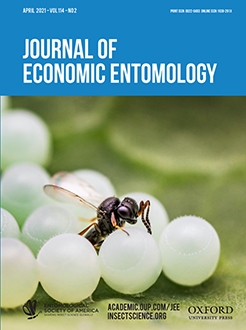Thresholds for Helicoverpa zea (Boddie) in cotton Gossypium hirsutum L. have been understudied since the widespread adoption of Bt cotton in the United States. Our study was possible due to the widespread presence of H. zea populations with Cry-toxin resistance. We initiated progressive spray timing experiments using three Bt cotton brands (Deltapine, Stoneville, and Phytogen) widely planted across the U.S. Cotton Belt expressing pyramided toxins in the Cry1A, Cry2, and Vip3Aa19 families. We timed foliar insecticide treatments based on week of bloom to manipulate H. zea populations in tandem with crop development during 2017 and 2018. We hypothesized that non-Bt cotton, cotton expressing Cry toxins alone, and cotton expressing Cry and Vip3Aa19 toxins would respond differently to H. zea feeding. We calculated economic injury levels to support the development of economic thresholds from significant responses. Pressure from H. zea was high during both years. Squares and bolls damaged by H. zea had the strongest negative yield associations, followed by larval number on squares. There were fewer yield associations with larval number on bolls and with number of H. zea eggs on the plant. Larval population levels were very low on varieties expressing Vip3Aa19. Yield response varied across experiments and varieties, suggesting that it is difficult to pinpoint precise economic injury levels. Nonetheless, our results generally suggest that current economic thresholds for H. zea in cotton are too high. Economic injury levels from comparisons between non-Bt varieties and those expressing only Cry toxins could inform future thresholds once H. zea evolves resistance to Vip3Aa19.
How to translate text using browser tools
22 February 2021
Economic Injury Levels for Bt-resistant Helicoverpa zea (Lepidoptera: Noctuidae) in Cotton
Alejandro I. Del Pozo-Valdivia,
Dominic D. Reisig,
Lewis Braswell,
Jeremy K. Greene,
Phillip Roberts,
Sally V. Taylor
ACCESS THE FULL ARTICLE
It is not available for individual sale.
This article is only available to subscribers.
It is not available for individual sale.
It is not available for individual sale.

Journal of Economic Entomology
Vol. 114 • No. 2
April 2021
Vol. 114 • No. 2
April 2021
Bacillus thuringiensis
Bollworm
chlorantraniliprole
fruiting structure
yield loss




